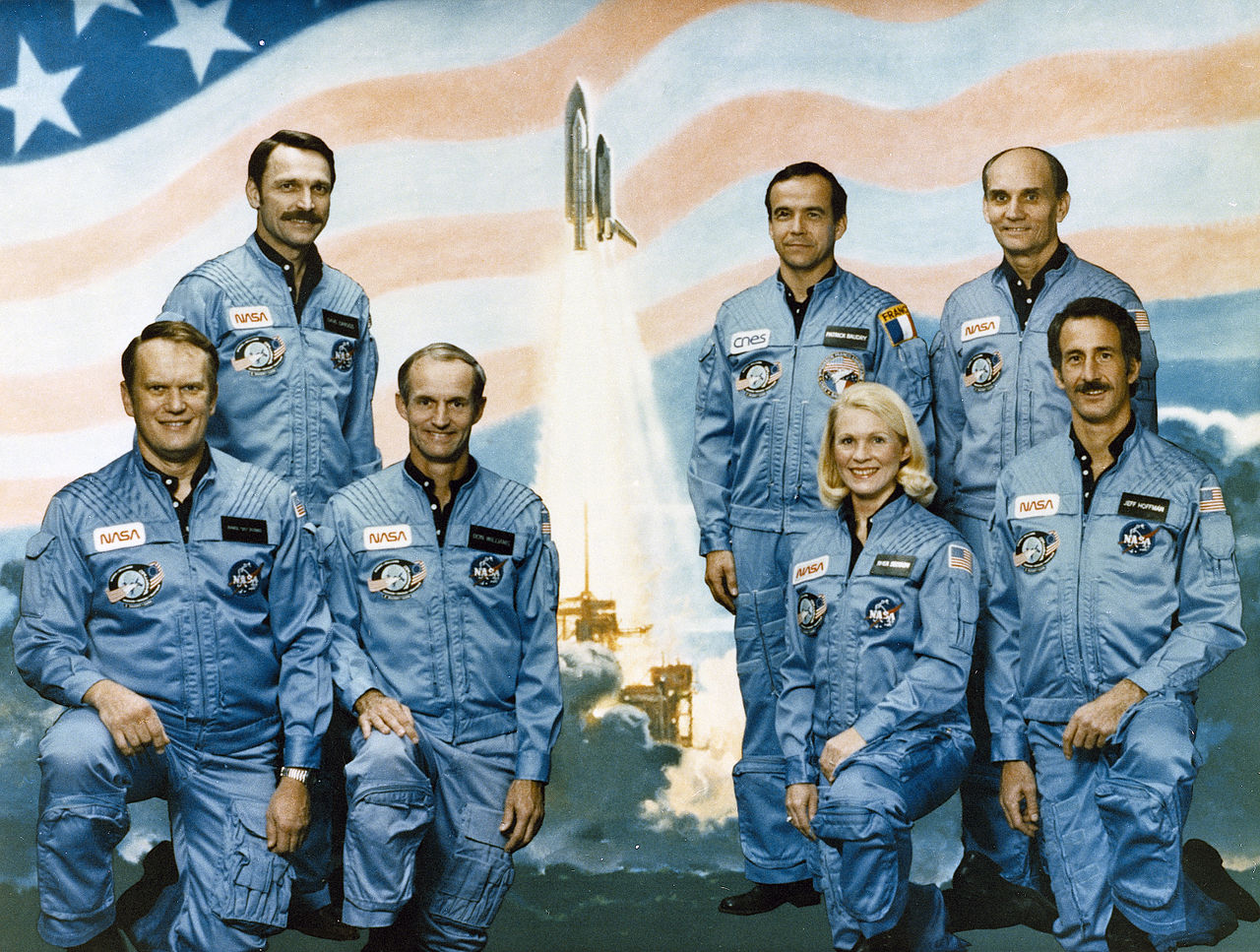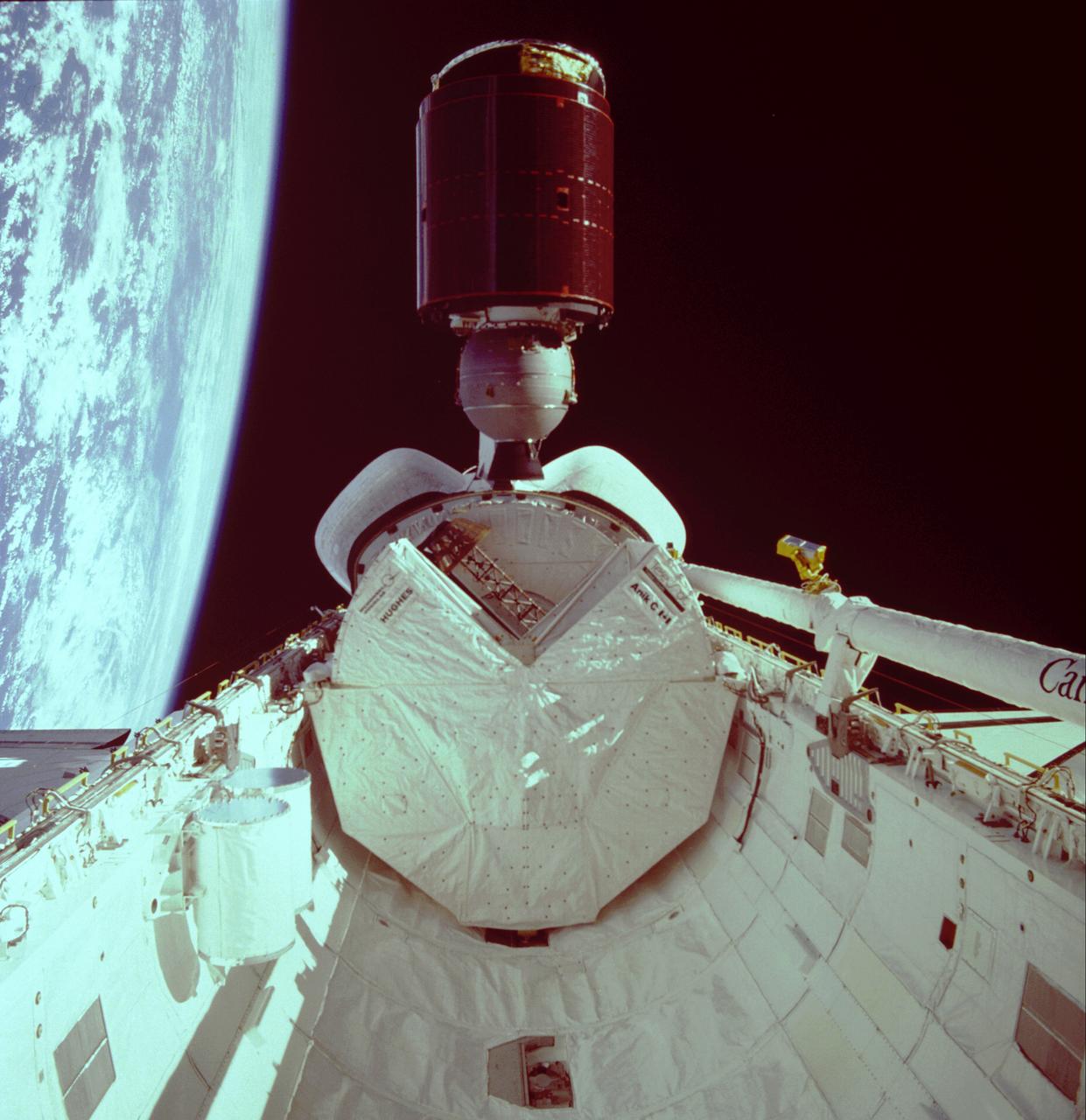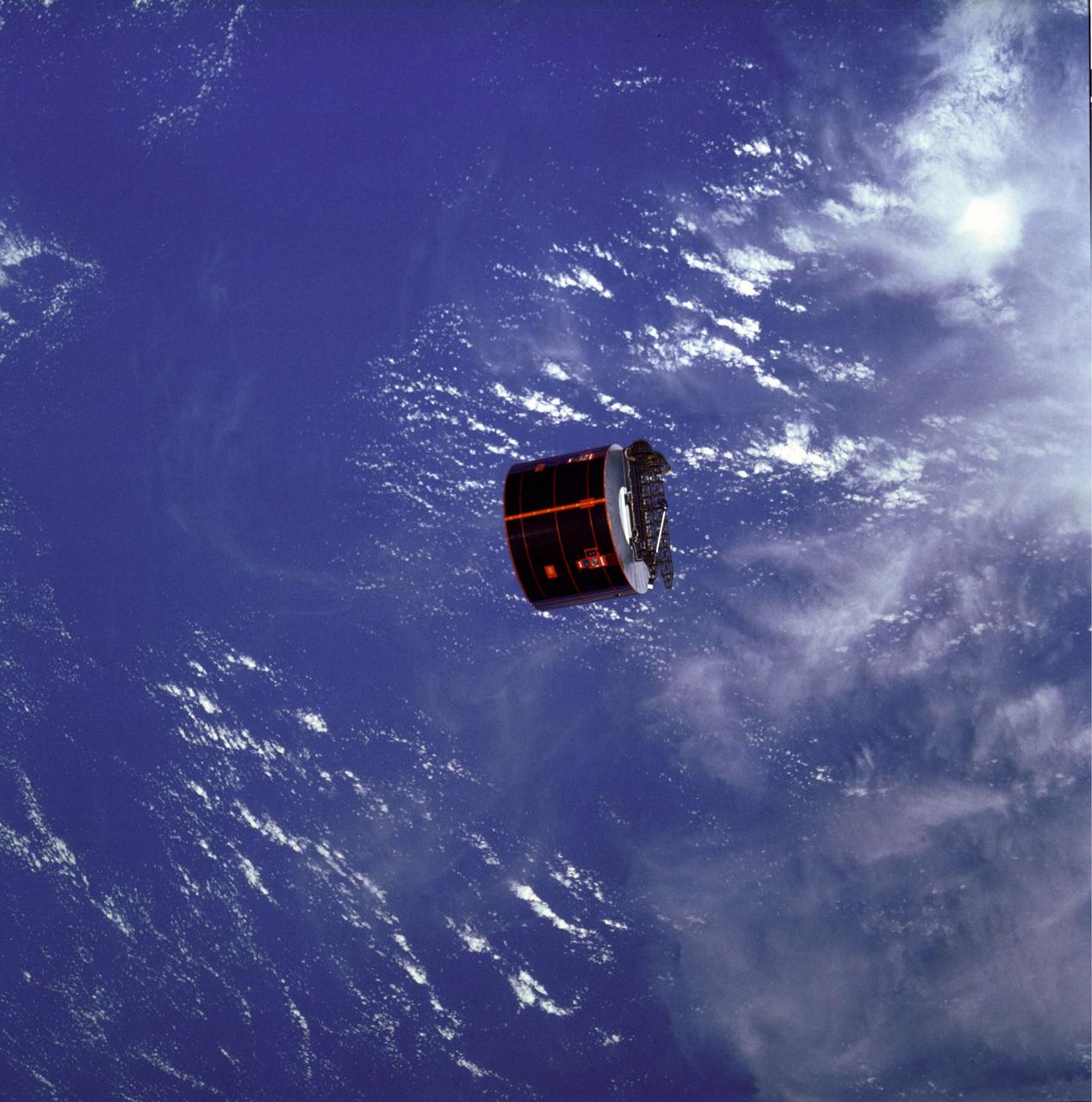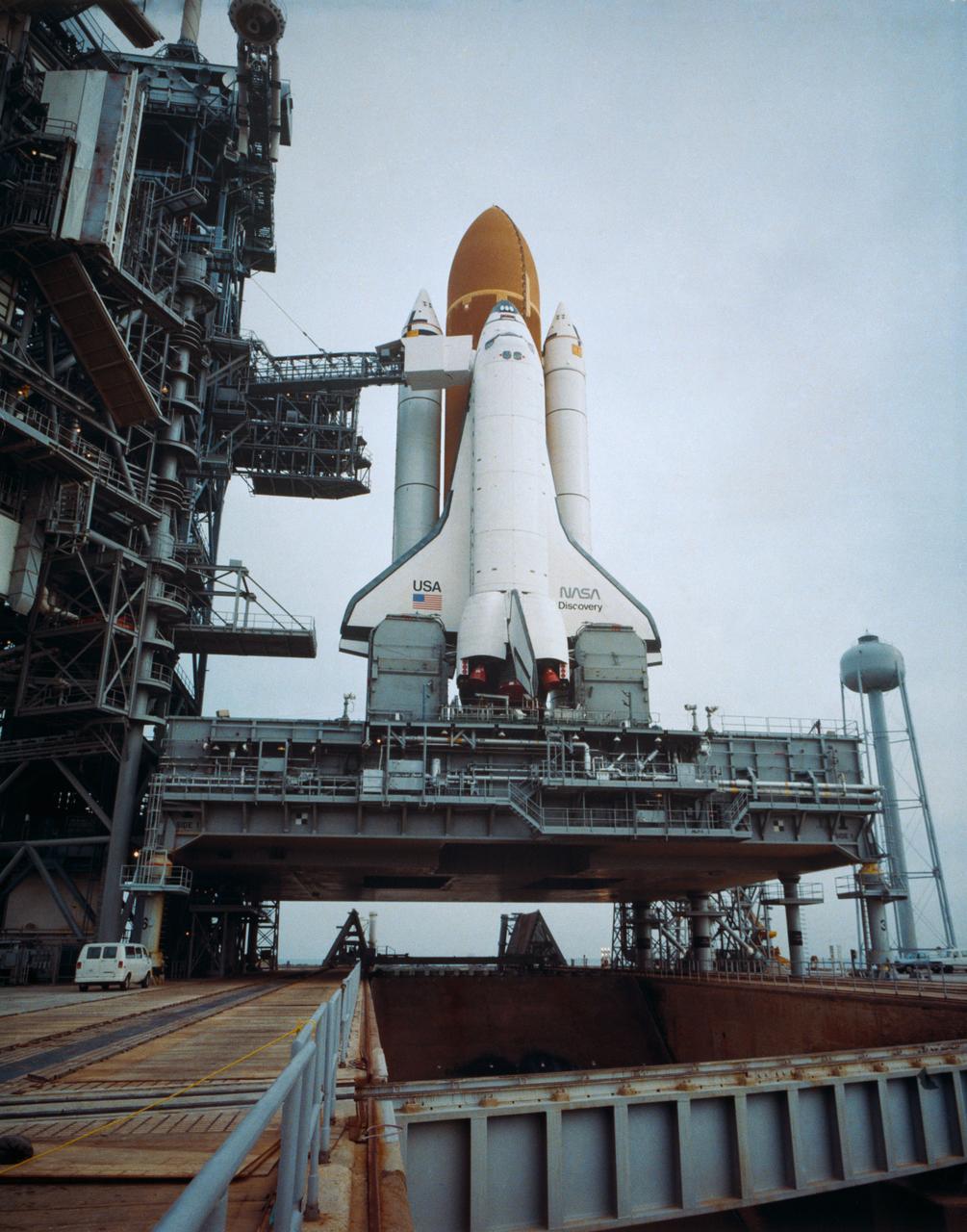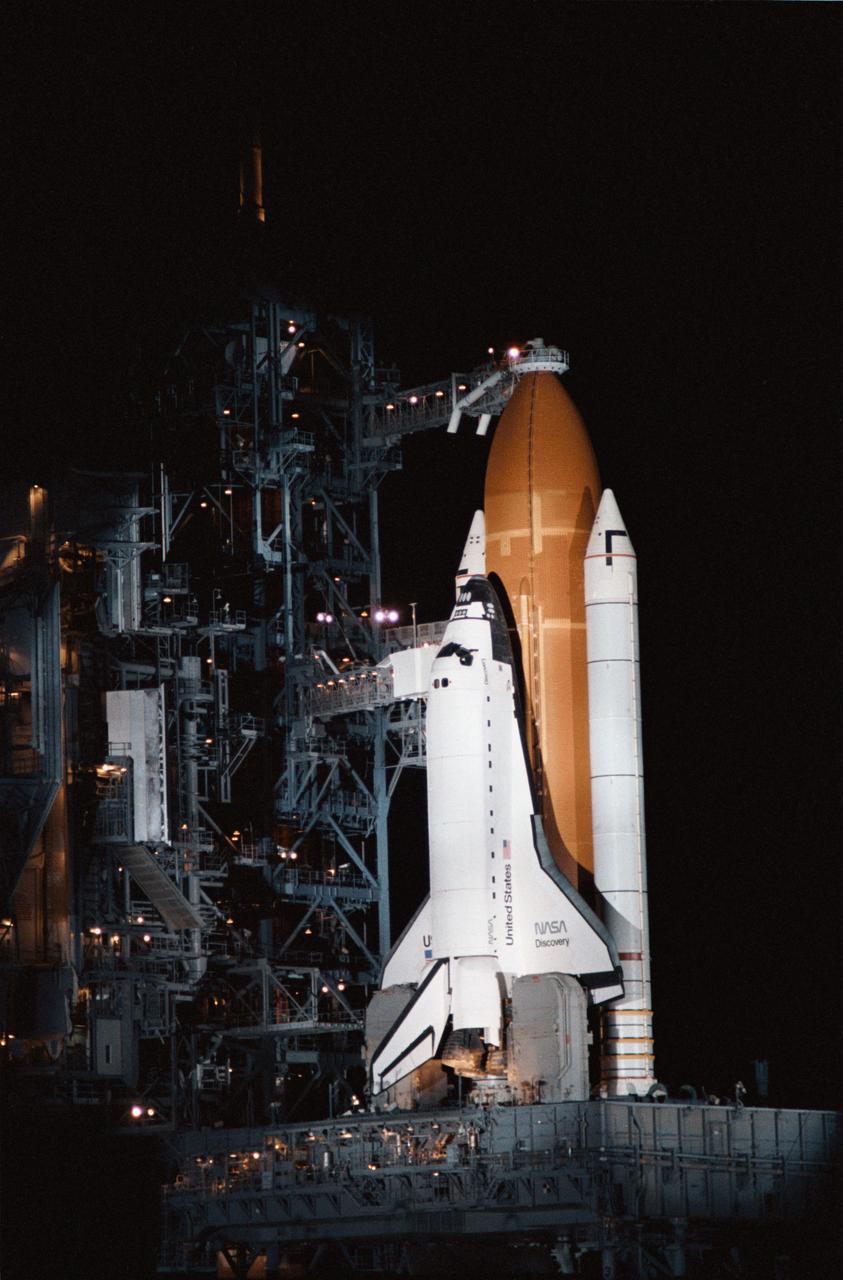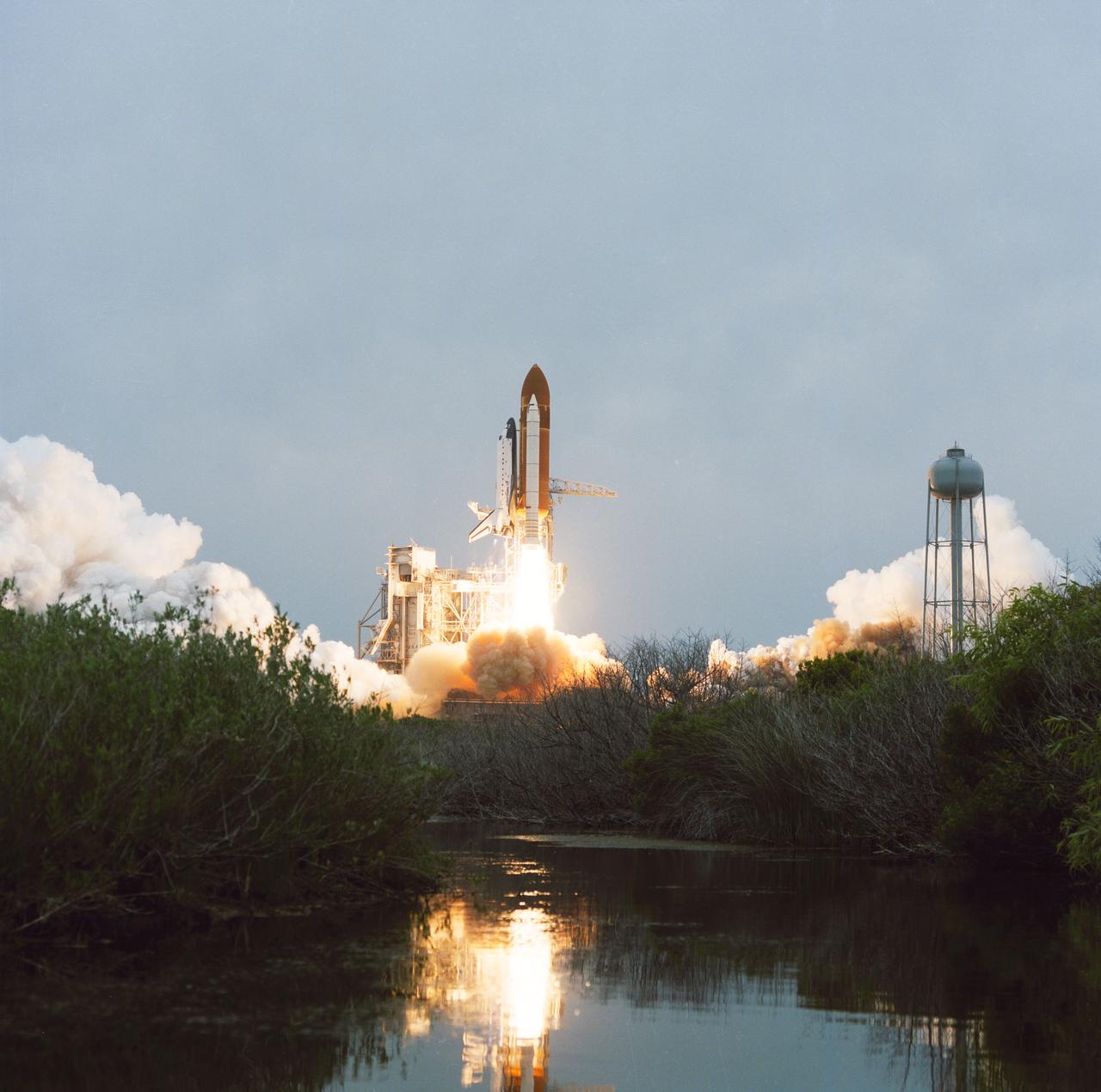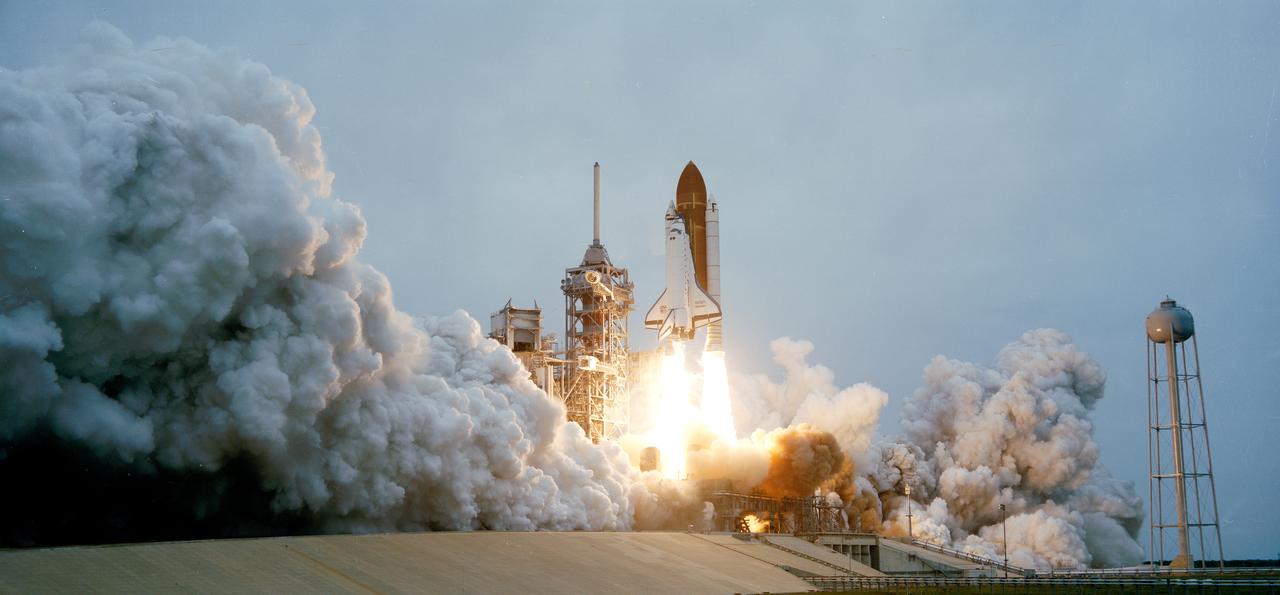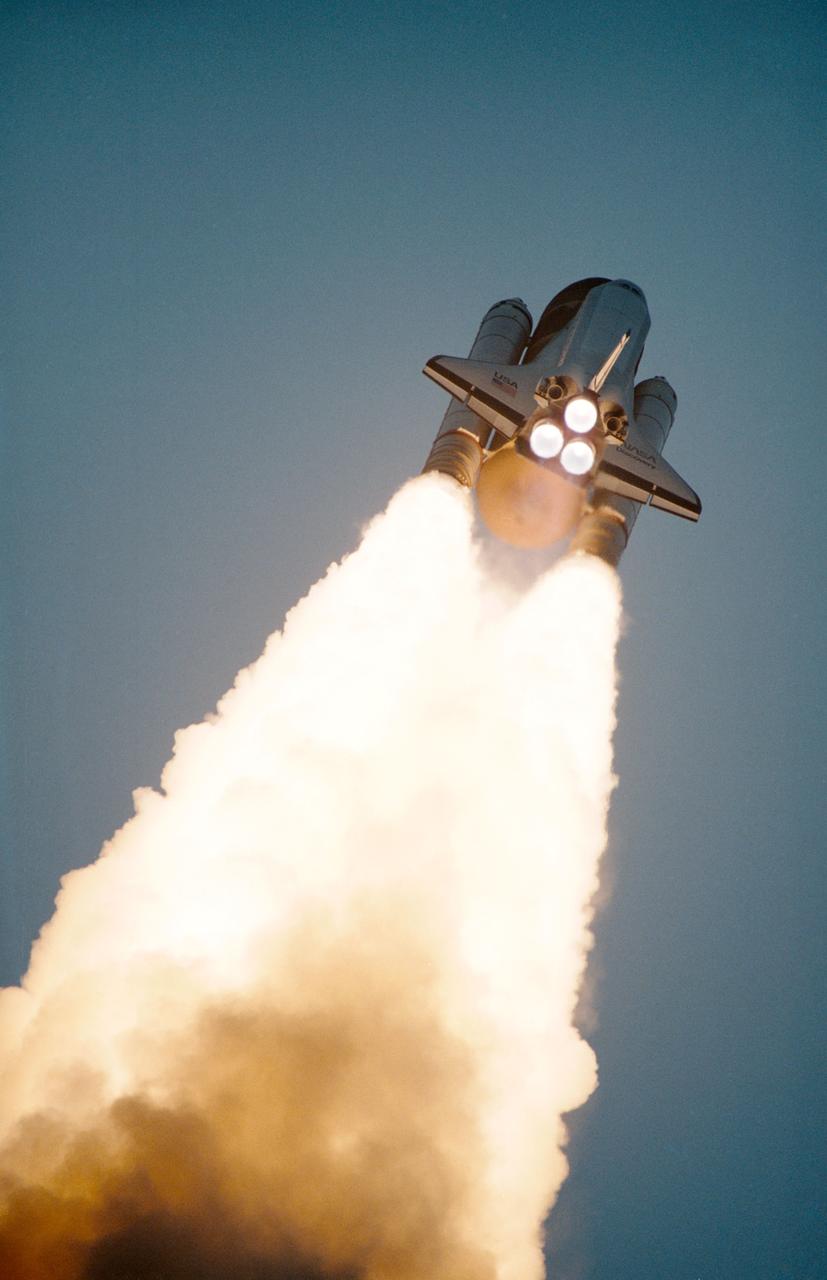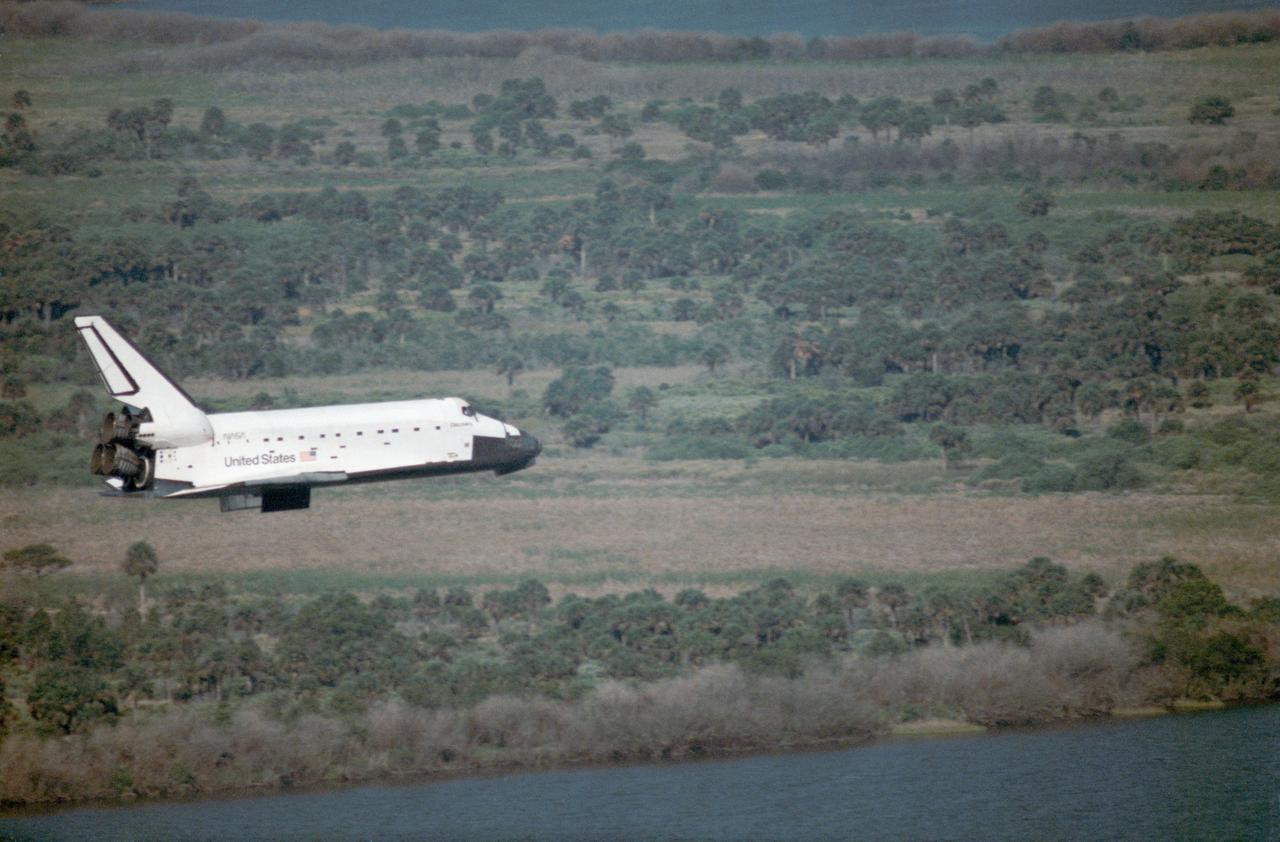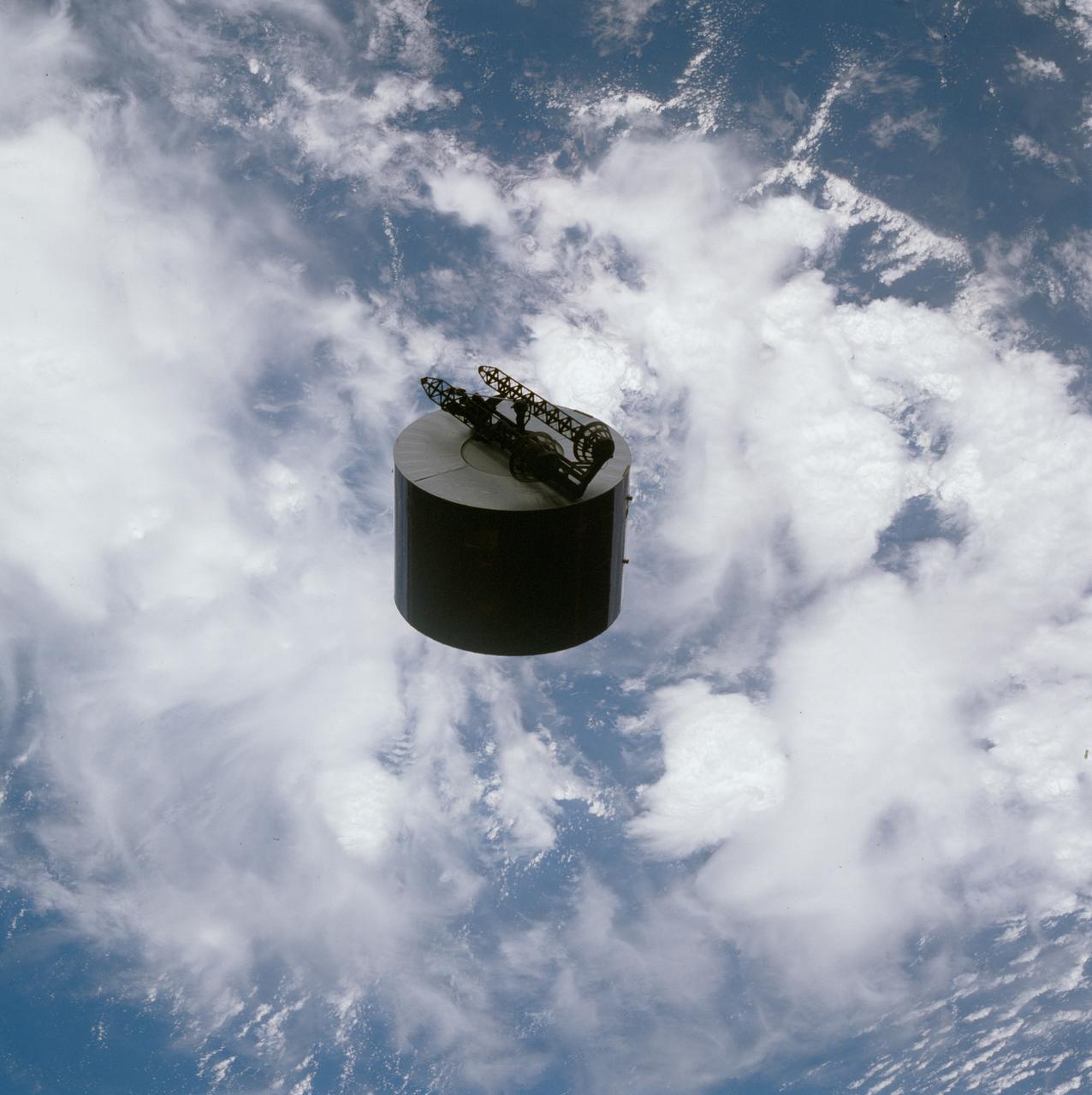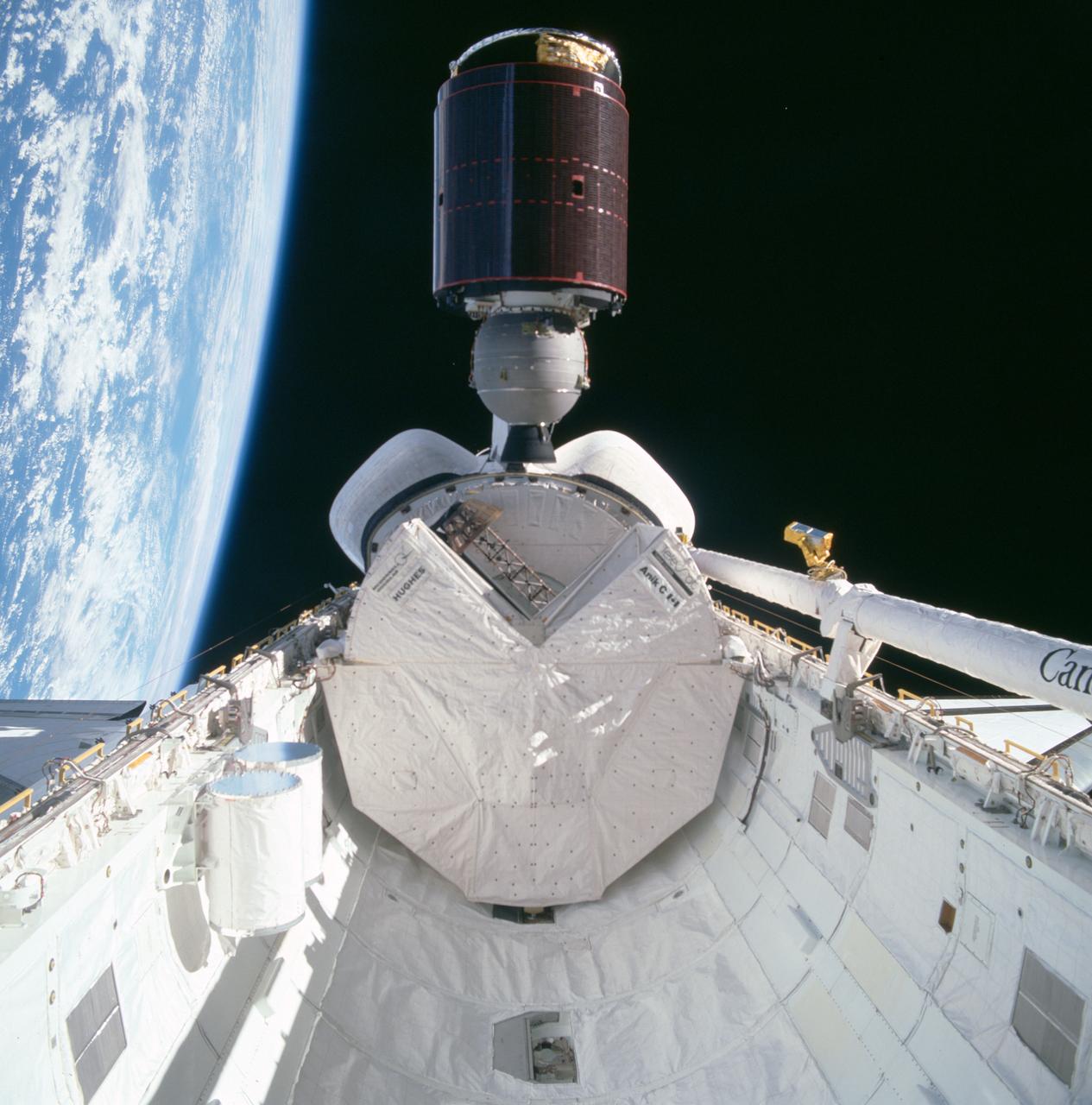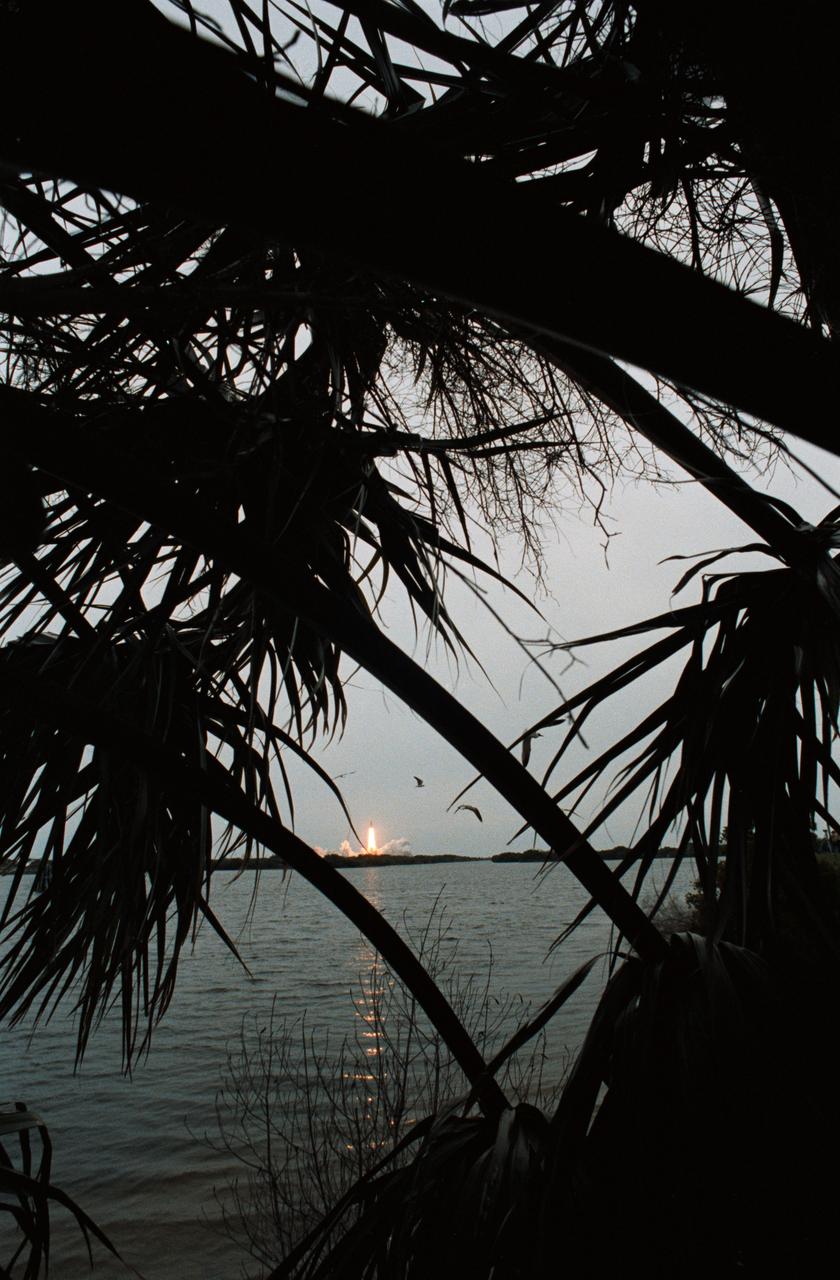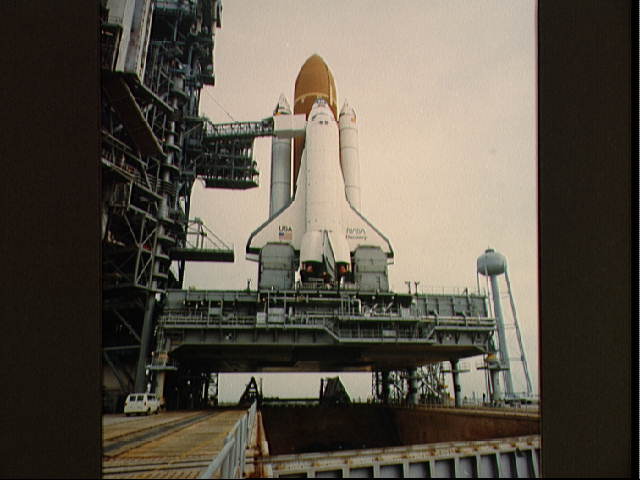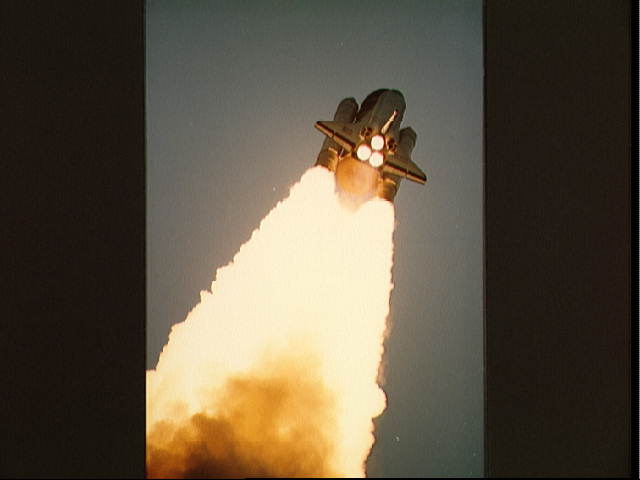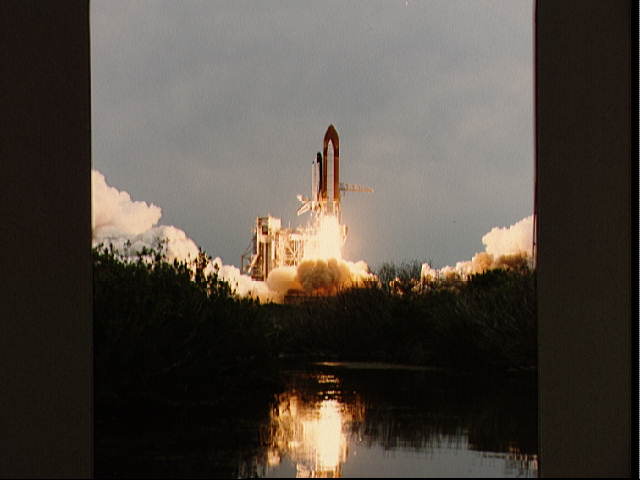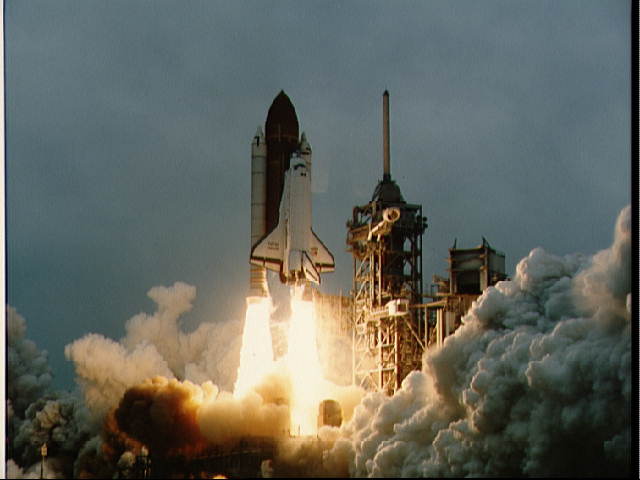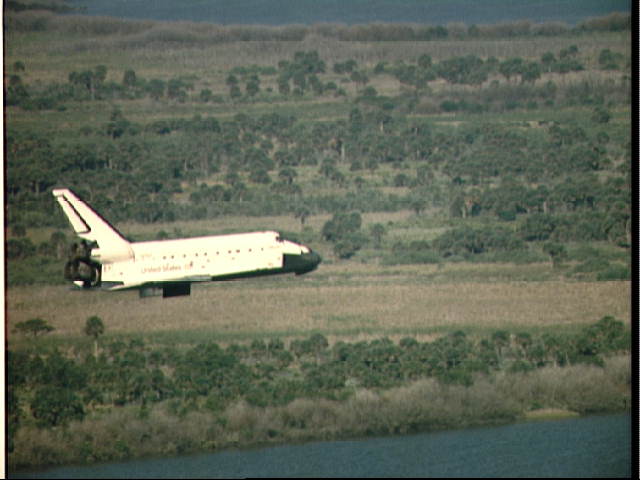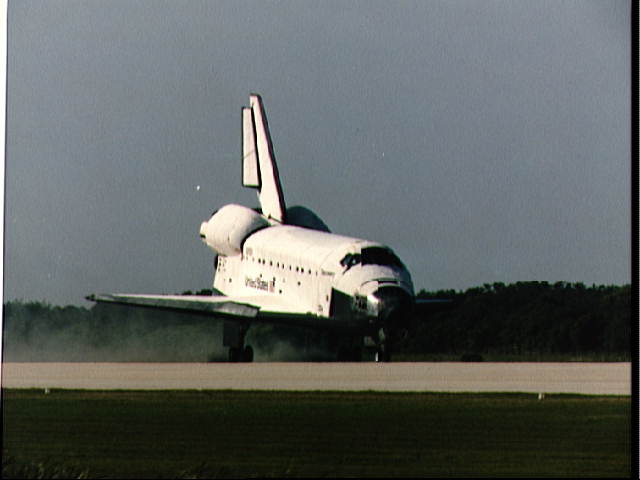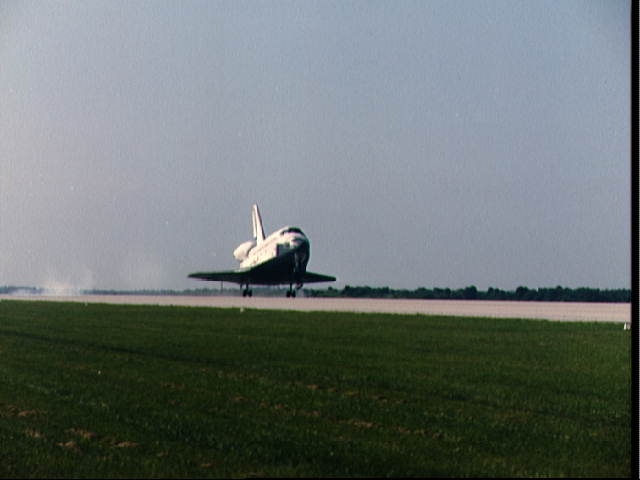STS-51D Fact Sheet
By Cliff Lethbridge

STS-51D — Discovery
16th Space Shuttle Mission
4th Flight of Discovery
Crew:
Karol J. Bobko, Commander
Donald E. Williams, Pilot
M. Rhea Seddon, Mission Specialist
S. David Griggs, Mission Specialist
Jeffrey A. Hoffman, Mission Specialist
Charles D. Walker, Payload Specialist
U.S. Senator E.J. Garn, Payload Specialist
Orbiter Preparations:
Tow to Orbiter Processing Facility – January 28, 1985
Rollover to Vehicle Assembly Building – March 23, 1985
Rollout to Launch Pad 39A – March 28, 1985
Launch:
April 12, 1985 (4th anniversary of STS-1 launch) – 8:59:05 a.m. EST. Launch had been set for March 19, 1985 and rescheduled for March 28, 1985 due to remanifesting of payloads from mission STS-51E, which was canceled.
Additional delays were experienced when Discovery’s payload bay door was damaged by a dropping access platform in the Orbiter Processing Facility. April 12 launch was delayed 55 minutes when a ship entered the solid rocket booster retrieval area.
Landing:
April 19, 1985 – 8:54:28 a.m. EST at Runway 33, Kennedy Space Center. Rollout distance was 10,298 feet. Rollout time was 63 seconds. Mission duration was 6 days, 23 hours, 55 minutes, 23 seconds. Landing occurred during the 110th orbit.
Discovery experienced severe brake damage and a blown tire during the landing. This prompted a temporary cancellation of future landings at the Kennedy Space Center pending the addition of nose wheel steering and brake improvements to the Shuttle fleet.
Mission Summary:
U.S. Senator E.J. Garn (R-Utah) became the first civilian observer to fly aboard a Space Shuttle. Garn acted as a Payload Specialist and Congressional Observer and participated in a host of medical experiments during the flight.
The TELESAT-I (also called ANIK C-1) communications satellite was deployed using an attached PAM-D solid rocket motor. SYNCOM-IV-3 (also called LEASAT-3) was deployed, but a spacecraft sequencer failed to initiate antenna deployment, spin-up and ignition of the perigee kick motor used to position the satellite properly.
The mission was extended two days to see if the crew could initiate repair of these problems. Astronauts Griggs and Hoffman performed a spacewalk on April 16, 1985 and attached a “home-made flyswatter” device to the Shuttle’s remote manipulator arm.
An attempt was made to make sure the satellite’s sequencer lever was in the proper position. The lever was caught by the flyswatter device, which reinforced the correct lever position. However, the satellite’s sequencer still did not activate.
The spacewalk lasted 3 hours, 6 minutes and marked the first unscheduled spacewalk in the history of the U.S. space program.
Other payloads included the Continuous Flow Electrophoresis System (CFES), two SSIP experiments, American Flight Echocardiograph (AFE), two GAS experiments, Phase Partitioning Experiments (PPE), astronomy photography verification tests, medical experiments and “Toys in Space” experiments, which demonstrated how some simple toys operate in microgravity.
While in orbit, the crew talked with STS-51B astronauts who were aboard Challenger at launch pad 39A for a practice countdown. This was the first Shuttle to Shuttle crew communication.
SELECTED NASA PHOTOS FROM STS-51D
